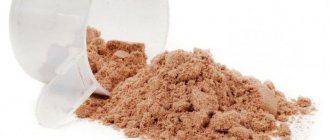Nowadays, almost all people who strive to maintain proper nutrition introduce various salads into their diet. Therefore, it is very important to know exactly what the shelf life of salads is, so that if necessary, you can prepare them in reserve, and not constantly make a new small portion. SanPiN standards that apply to enterprises will not be applied here, since according to them the product must be sold in just 1 hour.
But it’s still worth remembering that salads are perishable foods, and therefore, even if you follow all the storage rules, they won’t last long in the refrigerator. This article will explain the conditions and terms of storing salads at home, which must be observed in order to prevent poisoning from a stale product.
Why do you need to apply storage rules?
You may be interested in: Shelf life of salads: norms, rules and temperature
As you know, now you can prepare a dish from a variety of ingredients, which greatly affect the shelf life of salads, as does their pre-processing. But it is worth remembering that even at home, this product should not be stored in the refrigerator for more than 1 day, and if the salad was pre-seasoned with mayonnaise, its shelf life will be even shorter. However, if you do not follow the rules and shelf life, the salad will quickly become spoiled, and therefore not only will not be beneficial, but can also greatly affect your health, even to the point of poisoning.
You may be interested in: Salad with boiled beans: recipes
In Russia, many housewives, trying to feed a large family, quite often start cutting huge bowls of salads like Olivier or Mimosa. This is especially evident during the New Year holidays, since it is believed that you can eat leftovers from the table for several more days. However, you should know that even in the refrigerator, the shelf life of salads with mayonnaise is quite short, since after a few hours pathogenic microflora begins to develop in the components, which spoils not only the taste of the dish, but also its quality.
Shelf life of prepared meals according to SanPiN
According to the shelf life table of SanPiN (GOST), salads dressed with mayonnaise, even if all storage rules are followed, cannot be kept in the refrigerator for more than 6 hours. Otherwise, they will be considered stale, suitable only for disposal.
According to public catering standards, ready-made meals with mayonnaise and without refrigeration cannot be stored at all. You need to eat them in the first 1-2 hours, and then throw them away to avoid poisoning.
If you store sliced products and do not season with mayonnaise, then the shelf life is 6-7 hours at +2+3 degrees. Before eating, it is important to inspect vegetable and fruit salads from all sides and smell them. If a suspicious smell or taste appears, it is better to discard the product.
It is worth understanding that dressed salads (even the freshest) spoil very quickly. Shelf life will largely depend on the quality and freshness of the chopped products, mayonnaise or sour cream sauce. It is better not to cook in advance, in large portions that the whole family cannot eat, but to season with mayonnaise immediately before serving.
Lettuce leaves: how to store them correctly and what to cook from them. Tips from SHEFMARKET
Watch this video on YouTube
Store salad correctly: expert advice
Watch this video on YouTube
Do you want to understand better than others?
- Terms and rules for storing boiled shrimp in the refrigerator - Frozen or chilled shrimp can be bought in almost any supermarket, but the main point that you should pay attention to is their freshness. If you are buying...
- Temperature in the home refrigerator - The vast majority of users rarely think about what temperature the refrigerator should be. But a correctly adjusted operating mode allows you to save...
- Sanitary norms, rules and hygienic standards for storing food in the refrigerator - Ignorance of certain rules for keeping food in the refrigerator leads, at best, to its spoilage, and at worst, to poisoning. To avoid such consequences, storing food at home...
- Shelf life of seeds - When purchasing vegetable or flower seeds for planting, it is important to understand that there is no guarantee that they will all sprout. However, the expired expiration date indicated on the packaging is not always...
- How long does Olivier last? — The article provides information on how long Olivier salad is stored at low temperatures in the refrigerator and freezer, at room temperature. Advice on extending...
Rules for storing salads
You may be interested in: Salad with boiled beans: recipes
To prevent the risk of indigestion or even poisoning, you should carefully adhere to the following storage rules:
- If a salad was prepared from ingredients that were not subjected to heat treatment, but were seasoned with vegetable oil, then such a product must be stored on the top shelf, packed in a glass jar with a lid. The shelf life of the salad in the refrigerator will be only a couple of hours, after which the products will lose their freshness and taste.
- In the summer, it is best not to leave pre-dressed salads in the refrigerator, and if you do this, then for no more than 12 hours. During this period, the temperature and environmental conditions are such that the activity of pathogenic bacteria is much higher than in winter. Therefore, even the slightest signs of spoilage can lead to indigestion in the elderly and children.
- It is advisable to store salads and ingredients for them in a glass or plastic container. If you don't have them, you can use stainless steel bowls if necessary. However, you should completely abandon aluminum products, since this metal can react with products and cause damage.
- Many people think that if there is no space in the refrigerator, then the balcony in winter can be a great place to store salads. However, in practice, the shelf life of the salad may increase, but the taste and appearance of the products will completely deteriorate, since after defrosting they will give off liquid.
Frozen
It is not advisable to store almost all types of prepared salads, including vinaigrette, in the freezer. After defrosting, the dish will become a watery mass, and in addition, its taste will be irretrievably lost.
You can only freeze raw vegetables, cut into cubes, which will later need to be boiled.
The beneficial qualities of frozen salads are also very questionable. Therefore, the dish remaining after the celebration is eaten or thrown away, but not sent to the freezer.
General storage table
Storage
Shelf life
The most delicious and healthy is freshly prepared vinaigrette. But if you don’t have time to cook it on the day of the holiday, you can boil the vegetables a few days before and store them in bags without air, without removing the peel, on the refrigerator shelf. This way they can stay fresh for 1 week. The shelf life of the vinaigrette undressed (without onions and cucumbers) is the same.
An expired vinaigrette, like any spoiled product, can cause food poisoning. Stale food is especially dangerous for children and the elderly. Read our article about how long you can store vinaigrette in the refrigerator and how to recognize a spoiled product.
How long should salads with sour cream dressing be stored?
If you decide to immediately dress the salad, then you need to prepare for the fact that it will not remain fresh for long. Typically, the chosen dressing does not greatly affect the average shelf life, but there are some features that you need to pay attention to.
Sour cream dressing, as the name suggests, uses sour cream as the main component. However, this natural product deteriorates very quickly, so within 30 minutes after it stands at room temperature, the dressing will begin to sour. Moreover, the shelf life of the dressed salad will not change much if it is transferred to the refrigerator. That is why such a dressing should be used at the very last moment, since it is better not to eat such a product 3 hours after adding it to the salad.
In the freezer
Not all components can survive freezing. For example, fresh vegetables (cucumbers, tomatoes, avocados) lose their elasticity and become limp after defrosting. Only boiled vegetables, meat and fish should be placed in the freezer. For this:
- cut all the ingredients, put them in a vacuum bag, evenly distributing the pieces over its entire area (separate storage of ingredients is allowed). Sealed packaging will protect the contents from foreign odors.
- Do not add spices or dressing.
- Enter the date and time.
This mixture will keep in the freezer for about a month.
To defrost, place the bag in the refrigerator for 120 minutes and then place it at room temperature. Liquid may form during defrosting and must be drained.
Freezing always degrades the taste of food - remember this.
Mayonnaise dressing
Mayonnaise has a longer shelf life, but it is still quite small and does not exceed 6 hours. Of course, now this shelf life is practically not observed anywhere, since salad with mayonnaise can be stored longer without any harm to the body, but the dish will lose its taste quite quickly. Moreover, even nutritionists agree that for salads it is best to use a store-bought product, which, although not as high quality as home-made mayonnaise, has a longer shelf life due to preservatives.
Vegetable oil dressing
Although vegetable oils are usually considered preservatives that can extend the shelf life of a product, they do not have this effect in salads. When oils react with foods, they only destroy them, and therefore it is generally not recommended to store such salads dressed. They don't last more than a couple of hours at room temperature.
Suitable storage containers and extended freshness
It is recommended to mix the vinaigrette ingredients in large ceramic, porcelain or glass salad bowls, and then cover them with a lid to limit contact with air and prevent chapping. Plastic and enamel dishes are not suitable options for the described dish.
Attention! Aluminum and stainless steel containers are poor options for preparing and storing vinaigrette, since oxidation processes will begin faster and reactions will proceed more quickly.
To keep the vinaigrette longer in glass or ceramic containers, you need to prepare this salad according to the following algorithm:
- In a glass container, pre-chopped and boiled beets, potatoes and carrots are mixed with raw fresh onions, and then, so that the ingredients can be saturated with each other’s juices and aroma, they are left for 5-10 minutes at a temperature of +18...+22 ̊C. If you don’t like the characteristic onion flavor in the salad, then you need to add it to the total mass of ingredients immediately before serving, and until that time keep it in a glass, ceramic or porcelain container. When you plan to store a ready-made vinaigrette for a long time, it is also not recommended to add beets to the salad in advance, as they give an unpresentable appearance to the dish if it comes into contact with other ingredients for a long time.
- Cucumbers and cabbage are chopped and placed in separate containers, filled with brine to preserve juiciness. But, you need to add these ingredients to the salad base immediately before serving the dish. Lightly salted ingredients must be kept separately, both from each other and from the boiled components. It is also not recommended to add salt and season the vinaigrette right away - this should be done only before use.
- After mixing the ingredients and dressing, if the dish is served on a festive table, you need to eat it first, since even a short-term (2-6 hours) leaving the vinaigrette without a lid at room temperature leads to its souring.
It is permissible to keep the salad in the refrigerator for 2-3 days, but by the end of the first day its taste characteristics will begin to change for the worse.
Shelf life of raw vegetable salads
If you like salads that consist of raw vegetables, then it is best not to make them for future use, because even if they do not spoil, they will very soon lose their taste. However, the storage duration can be increased if several rules are followed:
If you follow these storage rules, the shelf life of an undressed vegetable salad can last up to 5-7 days without loss of taste or spoilage of ingredients.
In a refrigerator
The duration of storage is influenced by the type and quality of ingredients used, the presence of dressing, temperature and light conditions, and humidity level.
According to SanPiN standards, salads prepared in catering establishments must be sold within 30 minutes, and those sold in a hypermarket are stored for no more than 12 hours at a temperature of 4 ± 2 °C.
A self-prepared cold dish is most often placed in the refrigerator for a period of 6 to 48 hours, depending on the composition.
Refueled
The filling is of great importance in determining the maximum shelf life of the mixture. The most popular include:
- Vegetable oil (sunflower and olive);
- Mayonnaise;
- Sour cream, yogurt;
- A variety of sauces (“Caesar”, “Pesto”, “Thousand Islands” and others).
The most short-lived dressings are those based on fermented milk: they begin to deteriorate after 60-90 minutes. Salad dressed with oil will last in the refrigerator for 12 hours.
The use of mayonnaise and various sauces with the addition of preservatives allows you to preserve nutritional value for 24 hours. Over time, the taste of food deteriorates.
No refill
According to sanitary standards, undressed salads are stored longer: approximately from 18 to 36 hours, taking into account the ingredients they contain.
As a general rule, it is recommended to add the sauce no earlier than 30 minutes before serving. If it is not possible to prepare a cold appetizer immediately before a meal, it is recommended to cut the ingredients and place them in separate containers rather than mix them. Glass and plastic sealed containers are ideal for this purpose.
Shelf life of fruit salads
Fruit salads, like vegetable salads, are best eaten right away. However, if necessary, an unseasoned preparation for them can be made suitable for consumption in a couple of days. To do this, you must first place each of the fruits that will act as an ingredient in a colander to drain all excess juices.
Then all apples, pears or other components that often darken over time will need to be sprinkled with lemon juice, which will add a subtle aroma and an attractive appearance. In order for them to remain crispy and have a normal texture even after several days, it is recommended to soak all the fruits in ice water for several minutes before cutting. Well, in all other respects, storage rules should be similar to vegetable salads.
Storage Secrets
It is best to make a small portion of salad that you can immediately eat during your meal. But if there is still a vinaigrette left, then there is no need to salt it, or pour it with refined vegetable oil. Adding these components only shortens the “life expectancy” of the vinaigrette. There are no special requirements for storing this treat, but some nuances should still be taken into account.
Storage nuances:
- do not leave the vinaigrette at room temperature for a long time: either immediately place it on the table or in the refrigerator;
- the dishes must be hermetically sealed to prevent air from entering;
- use ceramic or glass containers, and for short-term storage a plastic container is also suitable;
- do not place salad on door shelves, the best place is near the freezer;
- be sure to comply with the established temperature standards - from +2 to +6°.
In the cold season, the container with the prepared vinaigrette can be placed, for example, on the balcony. But if the air temperature drops below zero, it is better not to do this, since the vegetable ingredients will quickly deteriorate and change their taste. It is also worth paying attention to the fact that the salad should not be exposed to direct sunlight. This will only speed up the process of its deterioration.
Sea kale salad
Nowadays, seaweed salads are becoming increasingly popular because they are very healthy and contain a lot of iodine. In relation to them, it is worth understanding that the usual shelf life of salads does not apply at all. You just need to carefully follow the recommendations for storage periods and rules indicated on the packaging. However, once opened, the salad is best eaten within a couple of days.
But if you decide to prepare this dish yourself from dried seaweed, then it must be stored for no more than 3 months at a temperature of 3-4 degrees.
Features of storage at home
The popularity of vinaigrette is explained by the fact that this dish is prepared from affordable and healthy boiled vegetables.
Interesting fact! The French call vinaigrette not a salad, but a sauce based on vinegar and vegetable oil.
The shelf life of the finished product depends on the ingredients. The classic recipe includes boiled vegetables (potatoes, beets, carrots), pickles, sauerkraut, green peas, fresh onions .
Sauerkraut, pickled cucumbers and fresh onions reduce shelf life. These components are added to the main part of the vinaigrette immediately before use. It is also better to season and salt the salad before serving.
Storage containers
The most suitable containers for preparing and storing dishes are glass or ceramic containers with tight-fitting lids. Dishes made of plastic and enameled metal are less preferable - in such containers the salad will spoil faster.
Aluminum and stainless steel containers are not suitable for storing vinaigrette. Oxidation processes in such dishes occur faster.











